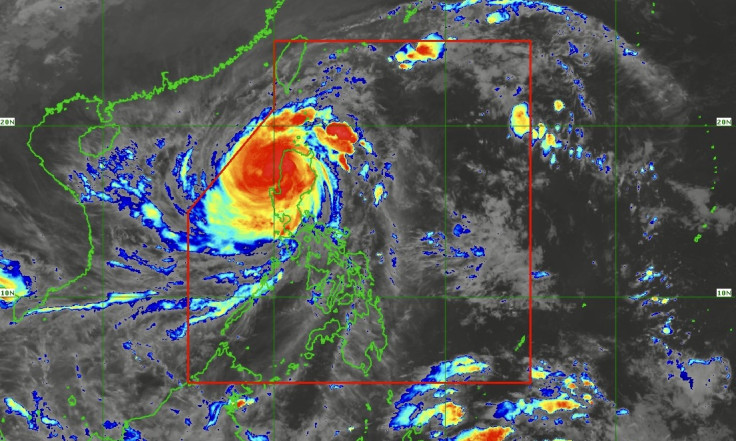Typhoon Fung-Wong Forces Mass Evacuations in Taiwan — Flights Cancelled, Power Lines Down

Taiwan is reeling from the impact of Typhoon Fung-wong, which tore through the island with violent winds and relentless rain, forcing thousands to evacuate and crippling transport and power networks.
The storm, which had earlier ravaged the Philippines, made landfall on Wednesday, triggering widespread disruption and highlighting the region's growing vulnerability to extreme weather.
Thousands Evacuated As Typhoon Pounds Southern Taiwan
Authorities ordered more than 8,000 residents to evacuate low-lying and landslide-prone areas as the storm swept across Kaohsiung, Tainan, Pingtung, and Taitung.
The Central Weather Administration (CWA) issued land and sea warnings, urging citizens to seek safe shelter. Schools and public offices across multiple counties were closed as part of precautionary measures.
Emergency crews deployed sandbags, pumps, and heavy machinery to control flooding and protect infrastructure. Taiwan's Ministry of Interior warned that heavy rain had loosened soil in mountain areas, increasing the risk of landslides over the coming days.
Flights Grounded Nationwide
Air travel was brought to a standstill as all domestic flights and several international routes were cancelled or delayed. Major airlines, including China Airlines and EVA Air, offered passengers free rebooking options amid travel chaos.
Airports in Taoyuan, Songshan, Kaohsiung, and Hualien were severely affected as strong wind bands swept through the island. The cancellations followed catastrophic scenes in the Philippines, where Fung-wong killed at least 25 people and displaced more than 1.4 million before weakening to a tropical storm.
Power Outages And Transport Chaos
Thousands of households were left without electricity as high winds toppled power lines and uprooted trees. Taiwan Power Company reported extensive outages across southern counties and deployed maintenance teams to restore service. Train services were suspended in multiple regions, while blocked roads hindered emergency access.
Local media aired images of residents wading through flooded streets, while military units assisted in clearing debris and delivering emergency supplies. Officials advised citizens to stay indoors until weather conditions improved.
Taiwan: Severe flooding in Hualien as the Mataian River overflowed in Mingli Village, Wanrong Township, due to heavy rains from Typhoon Fung-Wong (Uwan). pic.twitter.com/ccUQR4PG2l
— Volcaholic 🌋 (@volcaholic1) November 11, 2025
From Super Typhoon To Tropical Storm

Fung‑wong was initially classified as a super typhoon, with peak sustained winds of around 215 km/h (130 mph) as it tore through Luzon in the Philippines, causing widespread damage and mass evacuations.
By the time it reached Taiwan, however, the storm had weakened to a severe tropical storm, though meteorologists warned that its impact remained dangerous. Heavy rainfall, flash flooding, and storm surges along Taiwan's southern coast posed significant risks, prompting authorities to issue land warnings and suspend transport services.
The storm's trajectory suggested it would continue across Taiwan's southwest before moving into the Taiwan Strait. Authorities stated that the risk of flash floods and landslides would persist for several days, even after the storm had passed.
Government Response And International Aid
Taiwan's government evacuated thousands of residents in preparation for Typhoon Fung‑wong, with authorities deploying military vehicles and rescue teams to assist with relief efforts in affected areas.
President Tsai Ing-wen and local officials issued safety advisories urging citizens to follow official guidance. Schools and public facilities were closed in cities including Kaohsiung and Tainan to accommodate displaced families.
Meteorologists have noted the storm as part of a broader pattern of increasingly severe weather events, which may be linked to climate change.
Regional Impact And Climate Concerns
The devastation caused by Typhoon Fung‑wong has prompted renewed discussion about climate resilience in East Asia. Taiwan, like the Philippines, is situated in a region frequently affected by tropical storms.
Experts note that rising sea surface temperatures and increased atmospheric moisture are expected to intensify storms and result in heavier rainfall. For example, Taiwanese meteorologists have noted models showing fewer typhoons overall but greater average intensity and rainfall in Taiwan.
Outlook
Fung-wong's exit leaves Taiwan grappling with damaged infrastructure, flooded homes, and widespread blackouts. Recovery is expected to take several days as authorities focus on restoring utilities, reopening transport routes, and assisting displaced families.
The storm serves as a reminder of the growing urgency of climate resilience across East Asia, where preparation and early evacuation remain key factors in saving lives during such extreme weather events.
© Copyright IBTimes 2025. All rights reserved.





















